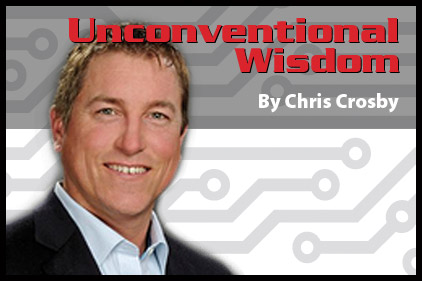While many in the industry continue to focus on issues like definition of modular and the future direction of the data center industry, when we step back and look at the bigger issues related to the marketplace, it becomes pretty obvious that things like the mode used for building and expanding a facility really isn’t that big a deal. For example, if you’ve been paying attention recently, two visions of the future are beginning to arise. On one hand, some believe that data centers will only become denser over time, while the competing view is that the growth of technologies such as ARM servers and flash storage will result in facilities that are less power intensive. Whether either of these perspectives prevails isn’t the issue either. The important conversation that you should be having is whether your next data center can accommodate both of these competing visions — or any others that may arise in the interim — regardless of which one comes out on top. In other words, is the facility future-ready?
When it comes to data centers, no one spends millions to build one based on the belief that they will get rid of it in five years or so. Despite all the strides made in facility design we are a long way from the day that “disposable” will be listed as an attribute. They don’t call these things long-lived assets for no good reason. Thus, the real conversation that you should be having regarding a new facility should be focused on whether it can adapt to any change in technological direction — in short, you have to decouple technology from your infrastructure.
An excellent example of this “decoupling” mindset — no, we’re not talking about Gwyneth Paltrow and that Coldplay guy — can be found with BMW’s plant in Spartanburg, SC. As hard as it is to believe, many auto companies today still use a plant-centric approach to manufacturing. Under this paradigm, a specific factory is designed to build a specific car, and requires an expensive — in time and cost — overhaul to build a different vehicle type. In contrast to this myopic mindset, the Spartanburg factory was built with the ability to respond to changes as a core element of its design. As a result, the factory not only produces the company’s X3, X5, and X6 vehicles, it also has the ability to build anything in BMW’s product line.
If we use BMW’s factory as an example, it becomes evident that the conversation surrounding your next data center should revolve around the flexibility of its infrastructure and not the associated technology. Purchasing or leasing a data center that can simultaneously support high and low density applications, for example, not only simplifies your overall planning process, but also protects you from the vagaries of future industry direction through its inherent flexibility. Alternatively, selecting a data center type that requires implementation only in homogenous load groups may fulfill an immediate need, but might also include an inherently shorter useful life depending on the evolving requirements of your organization.
In a capital-intensive, increasingly dynamic marketplace, the quality of your data center decisions make it imperative that decision making is focused on the issues that have real impact on both the near and long term direction of both the industry and your organization. The built in ability of your data center infrastructure to accommodate all of the potential outcomes of technological evolution, no matter what they may be, should be the crux of your discussions as opposed to its associated technology. As making the right data center decision becomes even more important, you need to make sure that if you are saying tomato, your prospective provider isn’t saying pear.




